When you explore the history of Vivienne Westwood as a fashion brand, you uncover a pioneering label that transformed fashion and culture. Founded in 1971 by designer Vivienne Westwood in Derbyshire, the brand rose to prominence during the punk era, crafting bold collections that challenged societal norms. Collaborating with Malcolm McLaren, Westwood's designs became synonymous with the punk aesthetic, shaping a generation's style. Over the years, the brand evolved its focus from provocative designs to social and environmental activism, using fashion as a platform for change. With numerous accolades and a strong global presence, Vivienne Westwood continues to inspire new designers and activists alike. As you dissect the brand's journey, you'll gain insights into its lasting impact and innovative spirit.
Early Life and Background
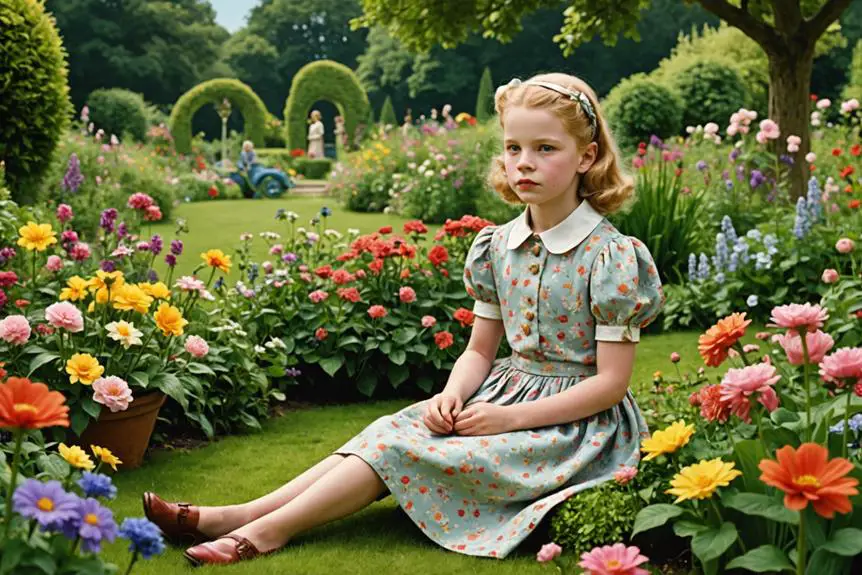
Vivienne Westwood's early life laid the foundation for her groundbreaking contributions to fashion. Born in Glossop, Derbyshire, in 1941, she grew up in a working-class family, with a cobbler father and a mother employed in a cotton mill. This background instilled in her a deep understanding of craftsmanship and durability, essential elements in her later designs. At 17, her family moved to Harrow, where she worked in a factory and pursued education at a teacher training school.
While teaching primary school, you can see how Westwood's creativity blossomed; she began designing dresses and jewelry, merging her educational experience with artistic expression. Her marriage to Derek Westwood in 1962 and their subsequent divorce in 1965 introduced personal complexities that would shape her worldview.
As a self-taught designer, Westwood sold her jewelry at Portobello Road, marking a pivotal moment in her career. This entrepreneurial spirit, combined with her rich family background and educational experiences, forged a unique perspective. Her early endeavors reflect a blend of practicality and creativity, setting the stage for her revolutionary impact on the fashion industry.
The Punk Era
The Punk Era marked a radical shift in fashion, with Westwood at the forefront of this cultural explosion. In 1971, she opened her iconic boutique, originally named Let It Rock, which quickly became a central hub for the punk movement in London. Collaborating with Malcolm McLaren, Westwood's shop underwent several name changes, including Sex and Seditionaries, reflecting the evolving nature of punk culture. Her daring designs for the Sex Pistols not only defined the band's image but also established a rebellious aesthetic that resonated with youth disillusionment. This era of fashion is often characterized by bold expressions and a breakaway from traditional styles, much like the distinctive tags of vintage clothing that signify authenticity and history.
The Fall-Winter 1981-1982 Pirate collection showcased a pivotal moment in Westwood's career. It marked a departure from the 70s silhouettes, integrating historical references and theatrical elements that redefined punk fashion. This collection not only highlighted her innovative approach but also solidified her status as a leading designer in the punk movement. By the time she presented her Spring-Summer 1984 Hypnos collection in Tokyo, Westwood had gained international acclaim. In doing so, she transformed the history of fashion, merging punk ethos with high fashion and ensuring her legacy would endure far beyond the confines of the 1970s.
Fashion Collections and Evolution
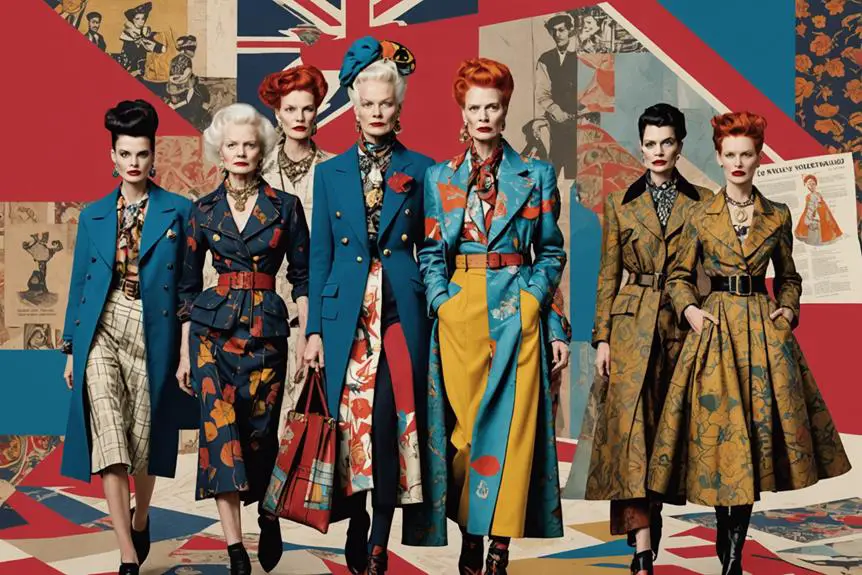
Emerging from the bold expressions of the Punk Era, Vivienne Westwood's fashion collections evolved to reflect a broader narrative that intertwined historical references with contemporary themes. In her early work, you saw provocative garments that challenged societal norms, like the bondage trousers from her shop SEX in the 1970s. The 1981 Pirate collection marked a pivotal shift, integrating 17th and 18th-century inspirations into a new romantic aesthetic, characterized by buccaneer trousers and oversized shirts.
As you moved into the late 1980s, the Anglomania collection showcased her innovative blend of British tailoring with French design, introducing her registered MacAndreas tartan and exaggerated proportions that redefined elegance. The Gold Illusion Gown from her 2011/12 collection highlighted her commitment to ethical fashion, emphasizing local artisan craftsmanship and sustainability.
Social and Political Activism
Amidst the glitz and glamour of high fashion, social and political activism has become a defining aspect of Vivienne Westwood's legacy. In the mid-2000s, you'd notice her shift towards activism, using runway shows as platforms to advocate for crucial social causes, particularly climate change awareness. Her Spring 2006 collection, AR, boldly proclaimed "I am not a terrorist," showcasing her dedication to intertwining political messages with fashion.
Westwood's activism is characterized by her collaborations and initiatives:
- Fash Mob: She organized this event during her SS16 Red Label show to promote climate issues.
- Greenpeace: Partnered with this organization to advocate for environmental standards.
- Médicins Sans Frontières: Joined forces with this humanitarian group to highlight individual liberties.
- Sustainability: Her later collections emphasized eco-friendly practices.
- Runway Shows: These became stages for raising awareness about pressing social issues.
Environmental Initiatives
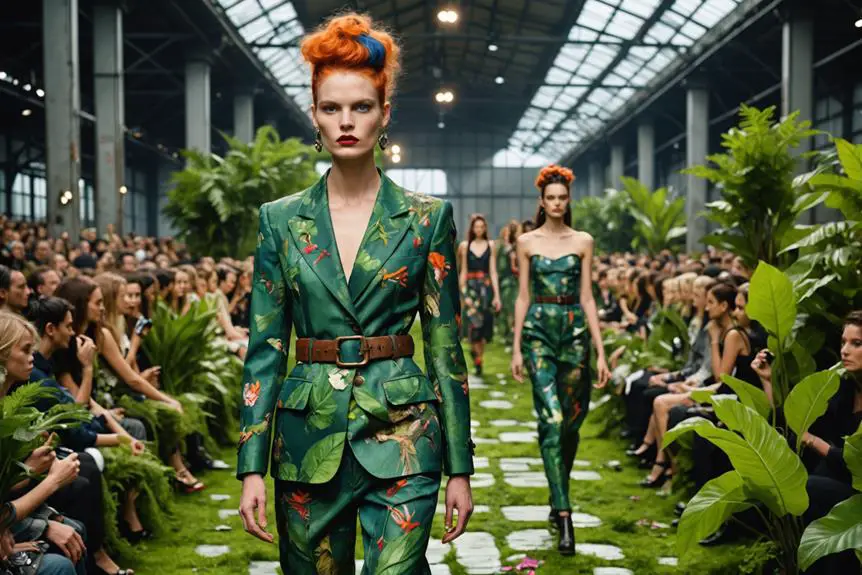
Vivienne Westwood's commitment to environmental initiatives reflects a profound evolution in her approach to fashion, blending style with sustainability. By partnering with Canopy for the 2020 World Earth Day campaign, she emphasized the importance of protecting forests through sustainable fabric choices. This collaboration showcases her dedication to ethical fashion practices, ensuring that the materials she uses contribute positively to the environment.
In response to climate change and its urgent impacts, Westwood shifted to fully digital fashion shows, minimizing her brand's carbon footprint. Her last physical show in Autumn-Winter 2019 marked a significant shift towards environmentally conscious presentations. The Spring-Summer 2013 Climate Revolution show was another pivotal moment, highlighting critical climate issues and rallying for awareness.
Moreover, her Spring-Summer 2016 Red Label show's Fash Mob in London engaged the public in environmental activism, demonstrating her ability to fuse fashion with advocacy. Throughout the 2010s, Westwood's consistent stance against climate change reinforced her role as a leader in sustainable fashion. By merging creativity with a commitment to the planet, she inspires others to prioritize ethical practices in the industry, driving a movement toward a more sustainable future.
Legacy and Impact
Fashion's landscape has been indelibly shaped by Vivienne Westwood's legacy, a demonstration of her role as a catalyst for change and innovation. As a pivotal figure in fashion history, she melded the punk movement with political activism, influencing generations of designers and cultural movements. Her remarkable contributions earned her the title of British Fashion Designer of the Year three times, alongside an OBE in 1992, solidifying her status in the industry.
Consider the following elements of her legacy:
- Her iconic designs, such as the Anglomania and Pirate collections, challenged conventional fashion norms.
- Westwood's commitment to environmental sustainability reshaped how fashion interacts with the planet.
- She consistently tackled countercultural themes, turning garments into statements of rebellion and individualism.
- The retrospective exhibition at the V&A Museum in 2004 celebrated her extensive career, showcasing her impact on fashion.
- Her advocacy for climate change awareness has inspired ethical fashion practices across the globe.
Through her work, Vivienne Westwood's influence continues to resonate, reminding us that fashion can be a powerful vehicle for social change and artistic expression.
Personal Life and Relationships
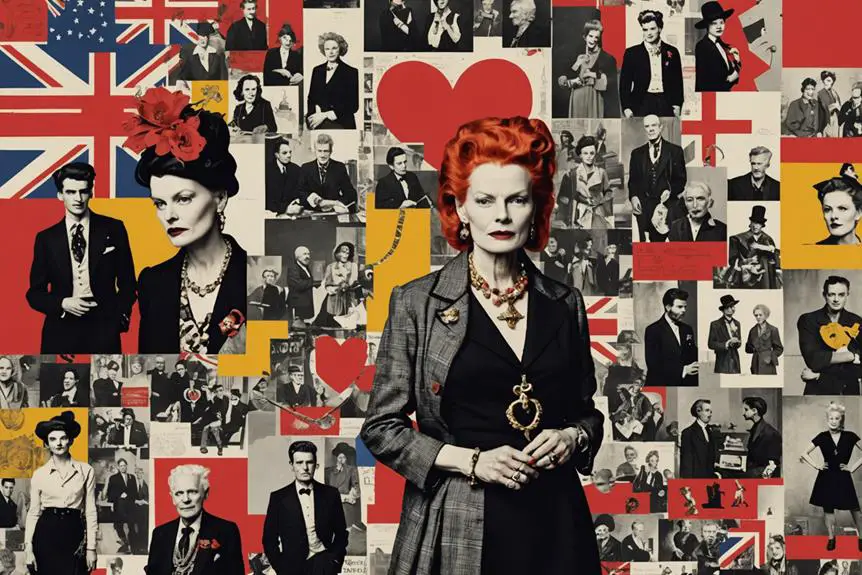
Maneuvering through the intricate web of personal relationships, Vivienne Westwood's life was as dynamic as her designs. Her first marriage to Derek Westwood in 1962, though brief, brought forth her son Benjamin, born in 1963. This familial connection laid the groundwork for her evolving identity as a designer. Westwood's long-term partnership with Malcolm McLaren greatly influenced the punk fashion movement, intertwining her personal life with her professional aspirations. Together, they welcomed another son, Joseph Corré, in 1967, further blending family ties with creative collaboration.
In 1993, Westwood married Andreas Kronthaler, who would become her design partner and creative director. Their relationship not only solidified her brand but also inspired a new wave of innovation in her work. As you explore Westwood's life, it's clear that her relationships served as both a foundation and a catalyst for her career. Her two sons have also carved their paths in creative ventures, reflecting Westwood's lasting legacy on family and fashion. Ultimately, Vivienne Westwood's personal life was a tapestry of love, collaboration, and creative energy, shaping her identity as a pioneering designer in the fashion world.
Frequently Asked Questions
What Are Some Important Facts About Vivienne Westwood?
Vivienne Westwood revolutionized fashion with her punk-inspired designs and boutiques. She won British Fashion Designer of the Year thrice, advocated for sustainability, and used her platform to express bold political statements, influencing generations of designers.
What Is the Origin of Vivienne Westwood?
Vivienne Westwood's origin lies in her modest upbringing in Derbyshire, where her family background influenced her creativity. Moving to Harrow, her early experiences shaped her unique perspective, ultimately igniting her passion for innovative fashion design.
Why Was Vivienne Westwood so Special?
Vivienne Westwood's uniqueness lies in her ability to fuse punk rebellion with high fashion. You'll find her designs challenge norms and address pressing issues, making her a trailblazer who inspires both creativity and social change.
What Does Vivienne Westwood Symbolize?
Vivienne Westwood symbolizes the fusion of fashion and activism, challenging norms through provocative designs. By addressing social issues and promoting androgyny, you see her as a revolutionary figure reshaping cultural perceptions and inspiring change in society.


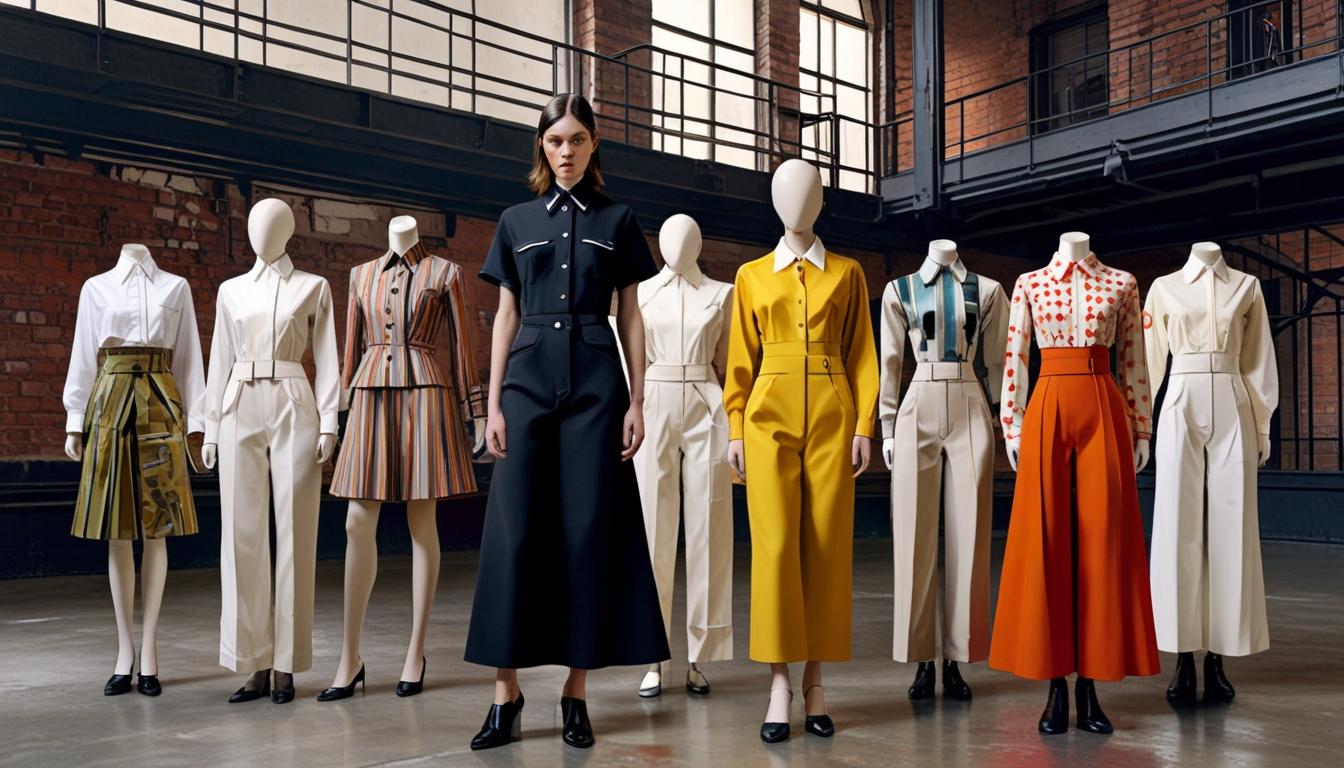
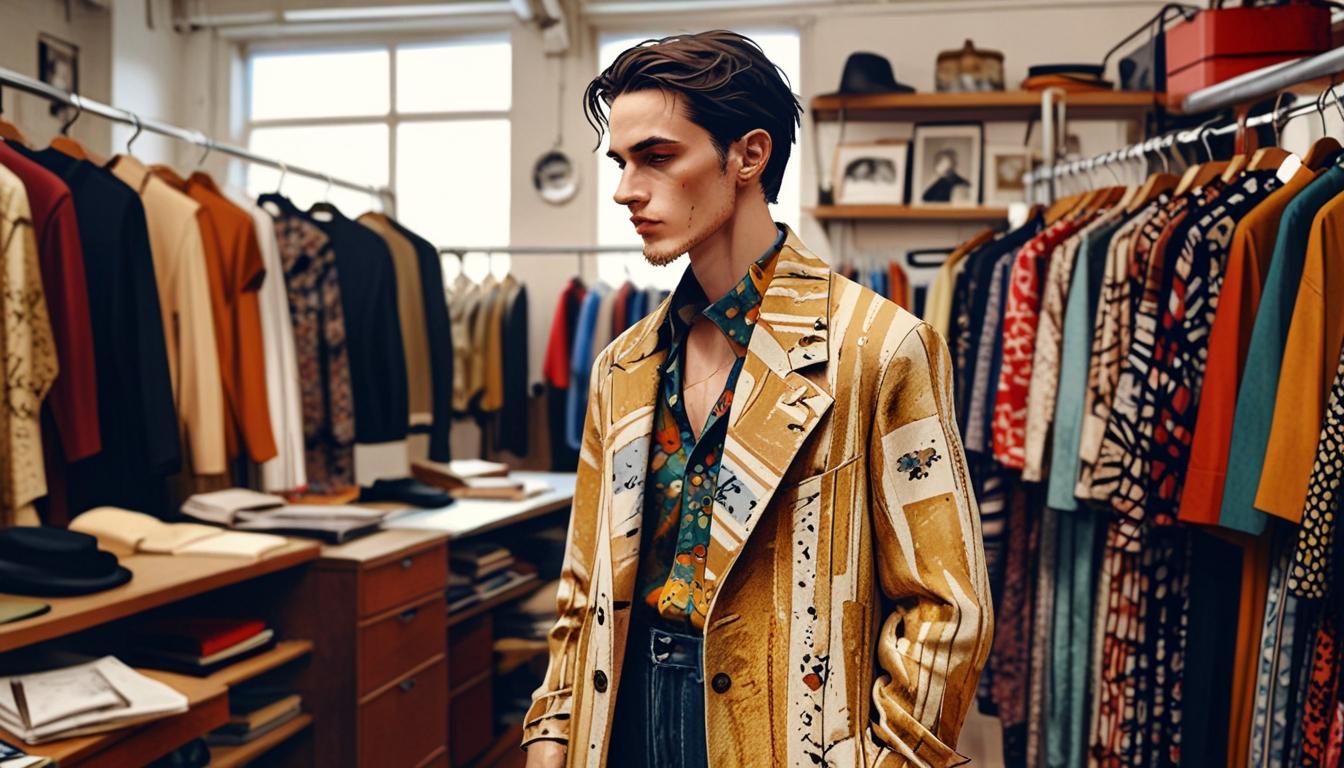

Choose Nassau Airport to Atlantis transportation for a safe, efficient, and luxurious transfer. Perfect for families and couples, services include private cars, limos, and shared rides with experienced drivers ensuring a pleasant journey.
Immerse into the epic realm of EVE Online. Test your limits today. Explore alongside millions of pilots worldwide. [url=https://www.eveonline.com/signup?invc=46758c20-63e3-4816-aa0e-f91cff26ade4]Begin your journey[/url]
I don’t think the title of your article matches the content lol. Just kidding, mainly because I had some doubts after reading the article.
I don’t think the title of your article matches the content lol. Just kidding, mainly because I had some doubts after reading the article.